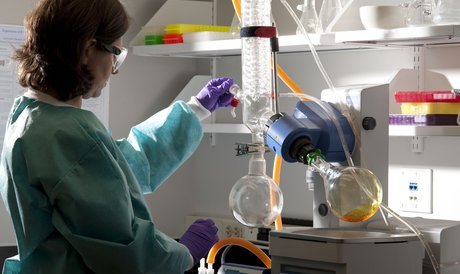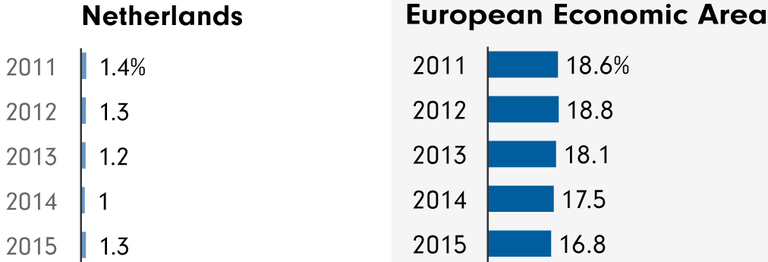
The Netherlands
The emergence of bacteria that cause infections in humans which are resistant to treatment with antibiotics has become a global public health concern.
Infections by multi-resistant germs are estimated to kill around 25,000 people in the EU every year, with some experts estimating that this number will increase dramatically over the coming decades.
But the situation between each member states varies hugely. Some countries have strict rules around antibiotic consumption and some don’t. The EU bodies responsible for addressing the problem recognise that there is no one-size-fits-all solution. This is why it is important to understand the situation in individual countries.
Livestock consumption of antibiotics
The Netherlands is one of the smallest countries in Europe at just 34,000 km². The human population is 17 million, while the largest livestock population is poultry with around 100 million birds. There are also some 12 million pigs, 4 million cows, and 1.5 million sheep and goats.
The small size coupled with relatively large livestock populations means that proximity to livestock production is inevitable. Public concern was raised with a series of outbreaks of Q fever which originated from goats in the south of the country in 2007.
With heightened public awareness, between 2009 and 2014 antibiotic use in the livestock industry fell by 59 per cent. 214.5 tonnes of antibiotics were sold to be used in food producing animals in 2014. This was a decrease of just over two per cent on the previous year, although the Netherlands are still in the top third of EU countries.
Human consumption of antibiotics
When it comes to human consumption of antibiotics, the Netherlands is among the lowest in the EU.
Antibiotic consumption in humans
Daily doses per 1000 inhabitants per day

Source: ECDC
In 2014, Dutch people consumed the fewest antibiotics of all EU nationalities both in and outside of hospitals. Outside of hospitals, 10.6 daily doses of antibiotics were taken per 1,000 inhabitants – more than three times fewer than the highest consumer, Greece. In hospitals just 1 daily dose of antibiotics was taken per 1,000 people, less than half the EU average of 2.1.
According to a special Eurobarometer survey published in June 2016, the Netherlands has the second lowest use of antibiotics in the EU, with one in five survey respondents in the Netherlands saying they had taken antibiotics in the past year, compared to a third of people in the EU.
The Netherlands also has the lowest national percentage of Staphylococcus aureus isolates resistant to methicillin (MRSA) at 0.9 per cent.
MRSA prevalence
Percent of hospital Staphylococcus aureus isolates that are resistant to methicillin

Source: ECDC
Hospital infections
The European Centre for Disease Prevention and Control (ECDC) also records healthcare associated infection (HAI) prevalence in European hospitals. This data shows what percentage of hospital patients have a hospital acquired infection – a large proportion of these infections are preventable, and are caused by poor hygiene.
The European average for HAI prevalence was 6.12%. In the Netherlands, this number was above the average at 7.4%.
Other indicators
An ECDC report which looked at infections and antibiotic use in European hospitals in 2011-12 reported on hospitals indicators like the use of alcohol hand rub and the number of single beds.
These indicators are important because they are measures that help to keep the rate of hospital acquired infections low, which helps to counter resistance – because the fewer infections patients acquire, the fewer antibiotics are used, and the less resistance can develop.
Single rooms are important because they can be used to isolate patients who have infections, preventing the infection from spreading. The amount of alcohol hand rub used indicates how well hospital staff are disinfecting their hands and following hygiene procedures – the more hand rub used, the less chance infections have of spreading.
In the Netherlands, 24.15 litres was the median alcohol hand rub consumption per 1,000 patient days. This was just below the European average of 25.64.
The percentage of single room beds out of the total number of hospital beds was just above the European average, with 16.53 per cent single room beds in the Netherlands compared to an average of 15.29 across Europe.
The Netherlands was also above the European average for the number of infection prevention nurses, with the equivalent of 1.43 per 250 hospitals beds. The European average was 0.97.
However, looking at the number of infection prevention and control doctors the Netherlands was below the European average, with just 0.19 full time equivalent infection doctors per 250 beds, compared to the average of 0.38.


